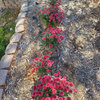Shoveling Sand against the Tide?
digit
16 years ago
Related Stories

CONTRACTOR TIPS10 Things to Discuss With Your Contractor Before Work Starts
Have a meeting a week before hammers and shovels fly to make sure everyone’s on the same page
Full Story
REMODELING GUIDESWisdom to Help Your Relationship Survive a Remodel
Spend less time patching up partnerships and more time spackling and sanding with this insight from a Houzz remodeling survey
Full Story
GARDENING GUIDESHow to Stop Worrying and Start Loving Clay Soil
Clay has many more benefits than you might imagine
Full Story
LIFEHard Winter? 9 Ways to Battle Cabin Fever
We know a lot of you are trapped where it just won’t stop snowing. Here are some ways to survive
Full Story
KITCHEN DESIGNCottage Kitchen’s Refresh Is a ‘Remodel Lite’
By keeping what worked just fine and spending where it counted, a couple saves enough money to remodel a bathroom
Full Story
LANDSCAPE DESIGNErosion Control for Your Seaside Garden
Learn how to protect the soil and plants on your shoreline for a beach landscape that lasts
Full Story
ARCHITECTUREStilt Houses: 10 Reasons to Get Your House Off the Ground
Here are 10 homes that raise the stakes, plus advice on when you might want to do the same
Full Story
ARCHITECTURE15 Smart Design Choices for Cold Climates
Keep your home safe and comfortable in winter by choosing the right home features and systems
Full Story
GREAT HOME PROJECTSHow to Give Your Driveway and Front Walk More Curb Appeal
Prevent injuries and tire damage while making a great first impression by replacing or repairing front paths
Full Story
BEFORE AND AFTERSSee 6 Yards Transformed by Losing Their Lawns
Wondering whether a turf lawn is the best use of your outdoor space? These homeowners did, and they found creative alternatives
Full StoryMore Discussions







david52 Zone 6
Skybird - z5, Denver, Colorado
Related Professionals
Londonderry Landscape Architects & Landscape Designers · Fort Lee Landscape Architects & Landscape Designers · Marco Island Landscape Architects & Landscape Designers · Summit Landscape Architects & Landscape Designers · Paradise Landscape Architects & Landscape Designers · Conroe Landscape Contractors · Fort Mill Landscape Contractors · Hicksville Landscape Contractors · Hilton Head Island Landscape Contractors · La Vista Landscape Contractors · Oakland Landscape Contractors · Chicago Ridge Landscape Contractors · Downers Grove Solar Energy Systems · Hercules Solar Energy Systems · Selma Solar Energy SystemsdigitOriginal Author
digitOriginal Author
Skybird - z5, Denver, Colorado
cnetter
digitOriginal Author
meershaum
digitOriginal Author
Skybird - z5, Denver, Colorado
meershaum
digitOriginal Author
david52 Zone 6
cnetter
aliceg8
digitOriginal Author
cnetter
cnetter
digitOriginal Author